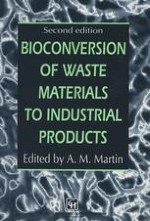1998 | Buch | 2. Auflage
Über dieses Buch
By covering both the general principles of bioconversion and the specific characteristics of the main groups of waste materials amenable to bioconversion methods, this new book provides the chemical, biochemical, agrochemical and process engineer with clear guidance on the use of these methods in devising a solution to the problem of industrial waste products.
Anzeige
